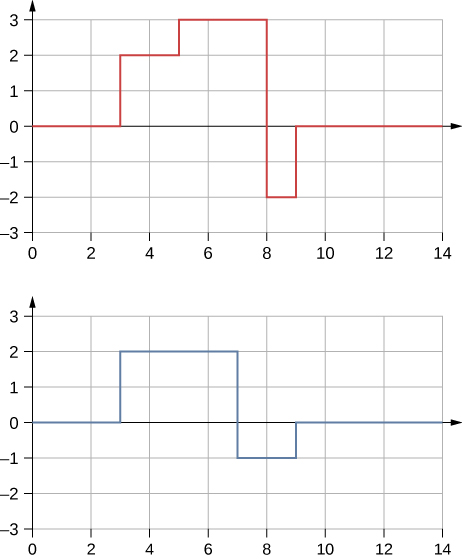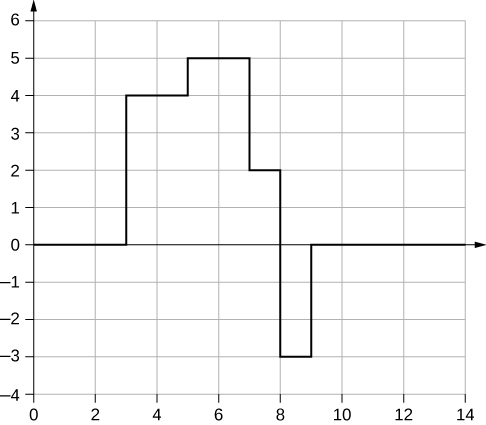| << Chapter < Page | Chapter >> Page > |
A long, tight spring is held by two students, one student holding each end. Each student gives the end a flip sending one wavelength of a sinusoidal wave down the spring in opposite directions. When the waves meet in the middle, what does the wave look like?
Many of the topics discussed in this chapter are useful beyond the topics of mechanical waves. It is hard to conceive of a mechanical wave with sharp corners, but you could encounter such a wave form in your digital electronics class, as shown below. This could be a signal from a device known as an analog to digital converter, in which a continuous voltage signal is converted into a discrete signal or a digital recording of sound. What is the result of the superposition of the two signals?


A string of a constant linear mass density is held taut by two students, each holding one end. The tension in the string is constant. The students each send waves down the string by wiggling the string. (a) Is it possible for the waves to have different wave speeds? (b) Is it possible for the waves to have different frequencies? (c) Is it possible for the waves to have different wavelengths?
Consider two sinusoidal waves traveling along a string, modeled as and What is the height of the resultant wave formed by the interference of the two waves at the position at time
Consider two sinusoidal sine waves traveling along a string, modeled as and What is the height of the resultant wave formed by the interference of the two waves at the position at time
Consider two sinusoidal sine waves traveling along a string, modeled as and What is the wave function of the resulting wave? [ Hint: Use the trig identity
Two sinusoidal waves are moving through a medium in the same direction, both having amplitudes of 3.00 cm, a wavelength of 5.20 m, and a period of 6.52 s, but one has a phase shift of an angle . What is the phase shift if the resultant wave has an amplitude of 5.00 cm? [ Hint: Use the trig identity
Two sinusoidal waves are moving through a medium in the positive x -direction, both having amplitudes of 6.00 cm, a wavelength of 4.3 m, and a period of 6.00 s, but one has a phase shift of an angle What is the height of the resultant wave at a time and a position ?
Two sinusoidal waves are moving through a medium in the positive x -direction, both having amplitudes of 7.00 cm, a wave number of an angular frequency of and a period of 6.00 s, but one has a phase shift of an angle What is the height of the resultant wave at a time and a position
Consider two waves and that are identical except for a phase shift propagating in the same medium. (a)What is the phase shift, in radians, if the amplitude of the resulting wave is 1.75 times the amplitude of the individual waves? (b) What is the phase shift in degrees? (c) What is the phase shift as a percentage of the individual wavelength?
Two sinusoidal waves, which are identical except for a phase shift, travel along in the same direction. The wave equation of the resultant wave is What are the angular frequency, wave number, amplitude, and phase shift of the individual waves?
Two sinusoidal waves, which are identical except for a phase shift, travel along in the same direction. The wave equation of the resultant wave is What are the period, wavelength, amplitude, and phase shift of the individual waves?
Consider two wave functions, and (a) Using a spreadsheet, plot the two wave functions and the wave that results from the superposition of the two wave functions as a function of position for the time (b) What are the wavelength and amplitude of the two original waves? (c) What are the wavelength and amplitude of the resulting wave?
a.
 ;
;
b.
; c.
Consider two wave functions, and (a) Verify that is the solution for the wave that results from a superposition of the two waves. Make a column for x , , , , and Plot four waves as a function of position where the range of x is from 0 to 12 m.
Consider two wave functions that differ only by a phase shift, and Use the trigonometric identities and to find a wave equation for the wave resulting from the superposition of the two waves. Does the resulting wave function come as a surprise to you?
The result is not surprising because

Notification Switch
Would you like to follow the 'University physics volume 1' conversation and receive update notifications?